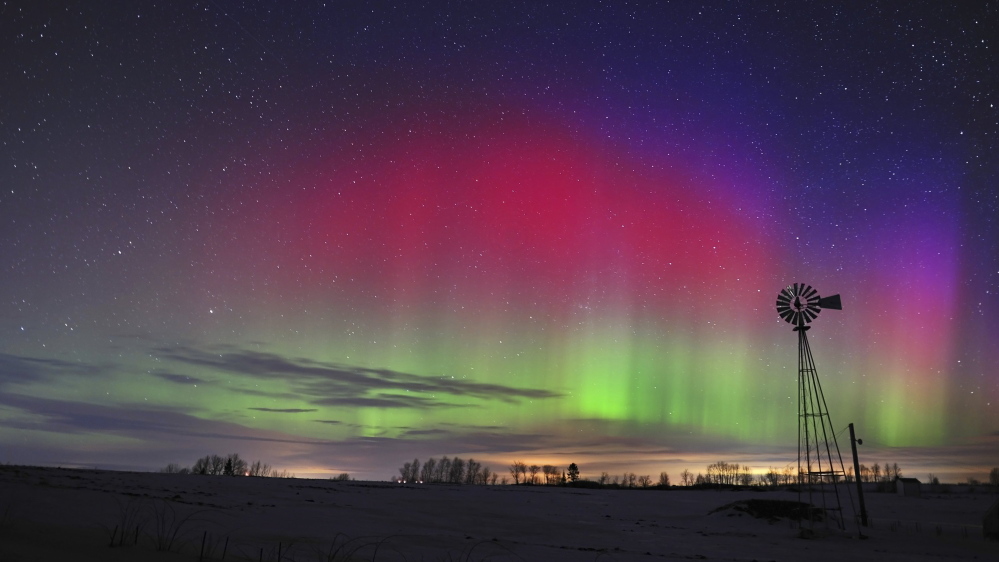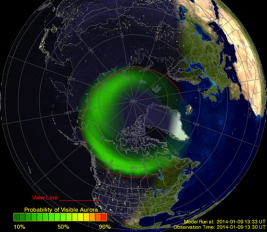A solar flare is expected to create a colorful, shimmering display of Northern lights that may be seen in Maine.
After weeks of harsh winter weather, Maine and other northern states were in for a storm of a far different kind Thursday.
A strong burst of electromagnetic energy released from a solar flare was expected to pelt Earth’s magnetic field, making the famed northern lights visible through much of the nation.
The University of Alaska’s Geophysical Institute predicted that people in much of Canada and the northern fringes of the U.S., including Chicago, Boston, Cleveland and Seattle, might see the shimmering colors low on the horizon, The Associated Press reported.
Forrest Sumner, president of the Southern Maine Astronomers club, said the timing must be right for the flare to reach Earth and produce the colorful display at Maine’s latitude.
“For once, it’s clear,” Sumner said late Thursday. “We’re all anxious to see them.”
The solar storm is more than a display. The electromagnetic energy has already diverted airline flights around the poles and had a chance of disrupting GPS devices.
The bursts of magnetic energy are caused by sun spots, areas of intense magnetic activity that arise and disappear regularly on the surface of the sun. Because they have a lower temperature than the areas around them, sunspots appear as dark areas that are sometimes visible to the naked eye.
Many sunspots do not release waves of energy that can affect Earth, and are instead pulled back into the sun’s surface, Sumner said.
The magnetic particles take about two days to reach Earth. The aurora phenomenon is the result of those particles smashing into Earth’s magnetic field and flowing toward the poles, said Edward Gleason, manager of the Southworth Planetarium at the University of Southern Maine.
Atoms in Earth’s magnetosphere are excited by the energy, then return to their neutral state, in the process emitting light.
The best places to view the natural light show are in areas with minimal light pollution, far from cities or homes, in places with a clear view of the horizon in the northwest, the direction of magnetic north, said Gleason. The chance of seeing an aurora is greatest between 10 p.m. and 2 a.m., Gleason said.
Viewing may be difficult Friday, with clouds expected to move in.
Gleason said the moon is about two-thirds full, which may detract from the natural fireworks overhead. “It should be a tremendous event, but we can’t guarantee it,” he said.
Matt Byrne can be contacted at 791-6303 or at:
mbyrne@pressherald.com
Send questions/comments to the editors.





Comments are no longer available on this story